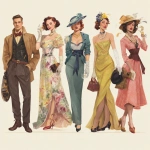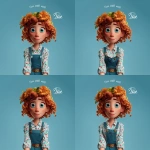Explore the Best AI Image Gallery
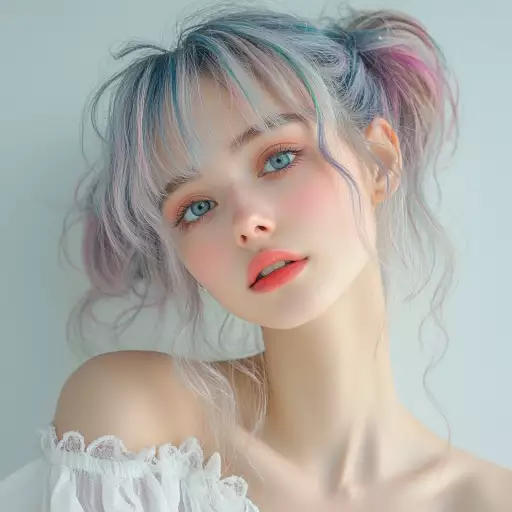
Beyond the Brush: How AI-Generated Visual Content is Reshaping Creativity
The realm of creativity has always been a space of human ingenuity, fueled by imagination and artistic expression. Yet, with the rapid advancements in artificial intelligence (AI), a new wave of innovation is sweeping through the creative industry – AI-generated visual content. From stunning artwork to captivating animations, AI is not only augmenting existing creative processes but also forging entirely new avenues for artistic exploration.
This blog post will delve into the multifaceted impact of AI-generated visual content, exploring its diverse applications, ethical considerations, and potential to reshape the future of creativity.
A Universe of Creative Possibilities
AI-powered tools are revolutionizing the way we create visual content. These algorithms can analyze vast datasets of images and learn intricate patterns, enabling them to generate unique and compelling visuals across a spectrum of styles and genres:
- Art Generation: AI algorithms can now produce paintings, sketches, and digital art in various styles, mimicking the works of renowned artists or forging entirely new aesthetics.
- Design & Illustration: Designers are leveraging AI to create logos, icons, website layouts, and even product prototypes, accelerating the design process and exploring innovative concepts.
- Animation & Filmmaking: AI can assist in creating realistic animations, generating character movements, and even composing cinematic scenes, pushing the boundaries of visual storytelling.
- Photo Editing & Manipulation: AI-powered tools can enhance images, remove unwanted objects, and even create entirely new compositions, offering unprecedented control over photographic content.
Navigating the Ethical Landscape
While the potential of AI-generated visual content is undeniable, it also raises important ethical considerations:
- Copyright & Ownership: Questions arise regarding the ownership of AI-generated artwork – who holds the rights to the creations?
- Bias & Representation: AI algorithms are trained on existing data, which may contain biases that reflect societal prejudices. This can result in AI-generated content perpetuating harmful stereotypes.
- Transparency & Accountability: The decision-making processes of AI algorithms can be complex and opaque, making it difficult to understand how AI-generated content is produced and who is responsible for its outputs.
The Future of Creativity: Collaboration and Evolution
AI-generated visual content is not about replacing human creativity but rather about augmenting and expanding it. The future likely holds a collaborative landscape where artists, designers, and AI work in tandem:
- AI as a Creative Tool: Artists can leverage AI to overcome creative blocks, explore new concepts, and generate initial sketches or designs.
- Human Oversight & Refinement: Human creativity will be essential in guiding the output of AI algorithms, refining the details, and imbuing content with artistic vision and emotion.
- New Artistic Forms: AI-powered tools may inspire entirely new genres of art and creative expression, blurring the lines between human and machine creativity.
Conclusion
AI-generated visual content is a powerful force reshaping the creative landscape. Its ability to generate stunning visuals, automate tasks, and push artistic boundaries presents both exciting opportunities and ethical challenges. By embracing responsible development, fostering collaboration between humans and AI, and nurturing a culture of ethical innovation, we can harness the transformative power of AI to unlock new dimensions of creativity and enrich our world with awe-inspiring visual experiences.
![**ultra detailed 8k cinematic black and white beauty portrait of a young woman from chest up, vertical frame, face, hands and hair filling the composition, smooth neutral grey studio background with soft dark vignette on the edges, center of the frame is her eye, lips and finger in a "shh" gesture oval symmetrical face with soft but well defined features, ultra smooth flawless skin, no pores, no wrinkles, perfect beauty retouch, straight elegant nose with soft highlight along the bridge and gentle shadow under the tip full sensuous lips with a sharp cupid’s bow, slightly parted, a thin bright glossy highlight strip on the lower lip emphasizing volume, subtle light reflection on the lip gloss one eye visible through a gap between fingers, other eye mostly hidden by the upper hand, long thick eyelashes like fake lashes, small bright catchlight in the pupil, upper eyelid with smoky eye makeup, darker tone along lash line fading smoothly towards the brow, dark thick well shaped eyebrows, gently arched, not overdramatic dark wavy hair, big glossy waves falling down, one clear S-shaped wave on the right side of the frame, soft highlights along the strands to show texture, hair swept away from the cheeks so the face is not covered both hands in thin semi-transparent black gloves up to the forearm, upper hand placed horizontally across the upper face, back of the hand towards camera, fingers slightly spread so that one finger is above the brows and another lower finger creates a narrow gap that reveals the eye, fingertips long and tapered, sharp stiletto-like nails visible under the sheer fabric, subtle darker seams along the fingers and glove edges lower hand bent so that the index finger is vertical and gently touching the center of the lips in a classic "shhh" pose, [...]** - Image #3 <@1264899319799222315>](https://images.ai-img.art/thumbnails/150/4c03a422708b372b43caaee1e2929933c40f0a13dc069beeeb228a60b126223b.webp)
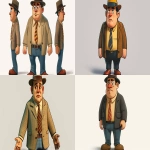
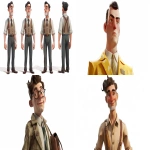
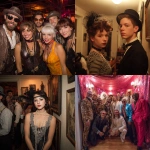
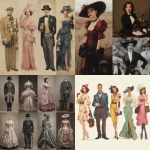
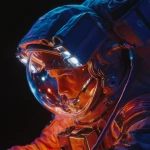

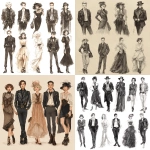
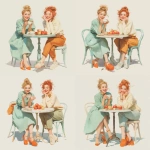
](https://images.ai-img.art/thumbnails/150/5487dcbcab0cd5702a67cc6819342ef56c05d0fc7730bfb7718ee291f10c3da3.webp)
![**ultra detailed 8k cinematic black and white beauty portrait of a young woman from chest up, vertical frame, face, hands and hair filling the composition, smooth neutral grey studio background with soft dark vignette on the edges, center of the frame is her eye, lips and finger in a "shh" gesture oval symmetrical face with soft but well defined features, ultra smooth flawless skin, no pores, no wrinkles, perfect beauty retouch, straight elegant nose with soft highlight along the bridge and gentle shadow under the tip full sensuous lips with a sharp cupid’s bow, slightly parted, a thin bright glossy highlight strip on the lower lip emphasizing volume, subtle light reflection on the lip gloss one eye visible through a gap between fingers, other eye mostly hidden by the upper hand, long thick eyelashes like fake lashes, small bright catchlight in the pupil, upper eyelid with smoky eye makeup, darker tone along lash line fading smoothly towards the brow, dark thick well shaped eyebrows, gently arched, not overdramatic dark wavy hair, big glossy waves falling down, one clear S-shaped wave on the right side of the frame, soft highlights along the strands to show texture, hair swept away from the cheeks so the face is not covered both hands in thin semi-transparent black gloves up to the forearm, upper hand placed horizontally across the upper face, back of the hand towards camera, fingers slightly spread so that one finger is above the brows and another lower finger creates a narrow gap that reveals the eye, fingertips long and tapered, sharp stiletto-like nails visible under the sheer fabric, subtle darker seams along the fingers and glove edges lower hand bent so that the index finger is vertical and gently touching the center of the lips in a classic "shhh" pose, [...]** - Image #1 <@1264899319799222315>](https://images.ai-img.art/thumbnails/150/ff5a24c7c060f5350508823c406c28c9596aea4e37eefb60abc0f37504a37383.webp)
![**ultra detailed 8k cinematic black and white beauty portrait of a young woman from chest up, vertical frame, face, hands and hair filling the composition, smooth neutral grey studio background with soft dark vignette on the edges, center of the frame is her eye, lips and finger in a "shh" gesture oval symmetrical face with soft but well defined features, ultra smooth flawless skin, no pores, no wrinkles, perfect beauty retouch, straight elegant nose with soft highlight along the bridge and gentle shadow under the tip full sensuous lips with a sharp cupid’s bow, slightly parted, a thin bright glossy highlight strip on the lower lip emphasizing volume, subtle light reflection on the lip gloss one eye visible through a gap between fingers, other eye mostly hidden by the upper hand, long thick eyelashes like fake lashes, small bright catchlight in the pupil, upper eyelid with smoky eye makeup, darker tone along lash line fading smoothly towards the brow, dark thick well shaped eyebrows, gently arched, not overdramatic dark wavy hair, big glossy waves falling down, one clear S-shaped wave on the right side of the frame, soft highlights along the strands to show texture, hair swept away from the cheeks so the face is not covered both hands in thin semi-transparent black gloves up to the forearm, upper hand placed horizontally across the upper face, back of the hand towards camera, fingers slightly spread so that one finger is above the brows and another lower finger creates a narrow gap that reveals the eye, fingertips long and tapered, sharp stiletto-like nails visible under the sheer fabric, subtle darker seams along the fingers and glove edges lower hand bent so that the index finger is vertical and gently touching the center of the lips in a classic "shhh" pose, [...]** - Image #4 <@1264899319799222315>](https://images.ai-img.art/thumbnails/150/8507c113aa12343ebd50af4ab9c637a6cf1acf21c55772271eb6a66bb04fa39c.webp)
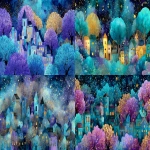
](https://images.ai-img.art/thumbnails/150/7c4350a99935771fe343a7ae65c780cf4cd6b861e69cdc32bd58a3a92fb2476f.webp)
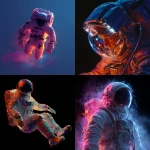
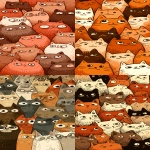


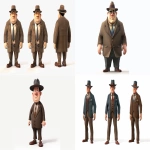
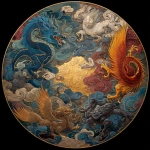
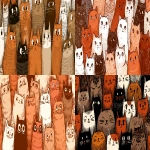
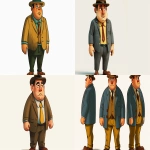

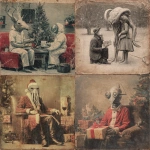
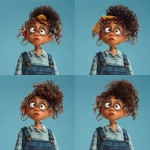
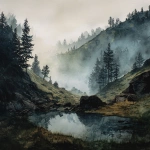
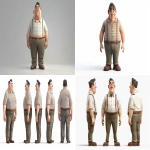
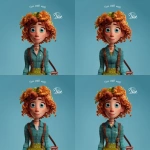

](https://images.ai-img.art/thumbnails/150/4f3d83c4b1d979b5be00f4ea80d67b71c0335bc1163e692d738e553ac37709e5.webp)
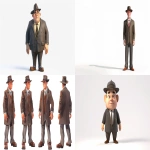
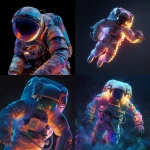
![**ultra detailed 8k cinematic black and white beauty portrait of a young woman from chest up, vertical frame, face, hands and hair filling the composition, smooth neutral grey studio background with soft dark vignette on the edges, center of the frame is her eye, lips and finger in a "shh" gesture oval symmetrical face with soft but well defined features, ultra smooth flawless skin, no pores, no wrinkles, perfect beauty retouch, straight elegant nose with soft highlight along the bridge and gentle shadow under the tip full sensuous lips with a sharp cupid’s bow, slightly parted, a thin bright glossy highlight strip on the lower lip emphasizing volume, subtle light reflection on the lip gloss one eye visible through a gap between fingers, other eye mostly hidden by the upper hand, long thick eyelashes like fake lashes, small bright catchlight in the pupil, upper eyelid with smoky eye makeup, darker tone along lash line fading smoothly towards the brow, dark thick well shaped eyebrows, gently arched, not overdramatic dark wavy hair, big glossy waves falling down, one clear S-shaped wave on the right side of the frame, soft highlights along the strands to show texture, hair swept away from the cheeks so the face is not covered both hands in thin semi-transparent black gloves up to the forearm, upper hand placed horizontally across the upper face, back of the hand towards camera, fingers slightly spread so that one finger is above the brows and another lower finger creates a narrow gap that reveals the eye, fingertips long and tapered, sharp stiletto-like nails visible under the sheer fabric, subtle darker seams along the fingers and glove edges lower hand bent so that the index finger is vertical and gently touching the center of the lips in a classic "shhh" pose, [...]** - Image #2 <@1264899319799222315>](https://images.ai-img.art/thumbnails/150/d87499f6bdc5a4a822aea4674654f70073b052542a1aaa1d08461a13ca2e07f9.webp)
](https://images.ai-img.art/thumbnails/150/1871c145bfe0276c6e1bacf6ec0da6d2dae71370bf71674589af29a201acdd5f.webp)
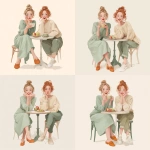
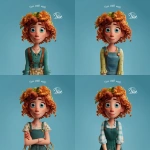
](https://images.ai-img.art/thumbnails/150/f3411154f4c743a26f102ecfc985f3f6214e93b285748fac66c88f3b52f85b26.webp)
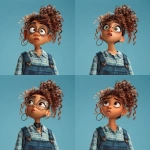

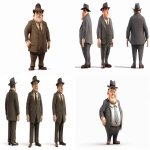


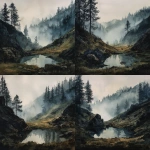
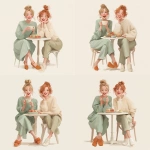

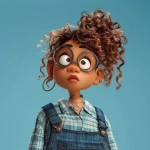
](https://images.ai-img.art/thumbnails/150/e07ad2e7379a835127482b0fd3176192c001c90e68a85b4315cf482b6a3f5ea5.webp)
](https://images.ai-img.art/thumbnails/150/d08f607caf4a5c380defef68b778febb8911e8e51e51927b09ed67880bd3084b.webp)
